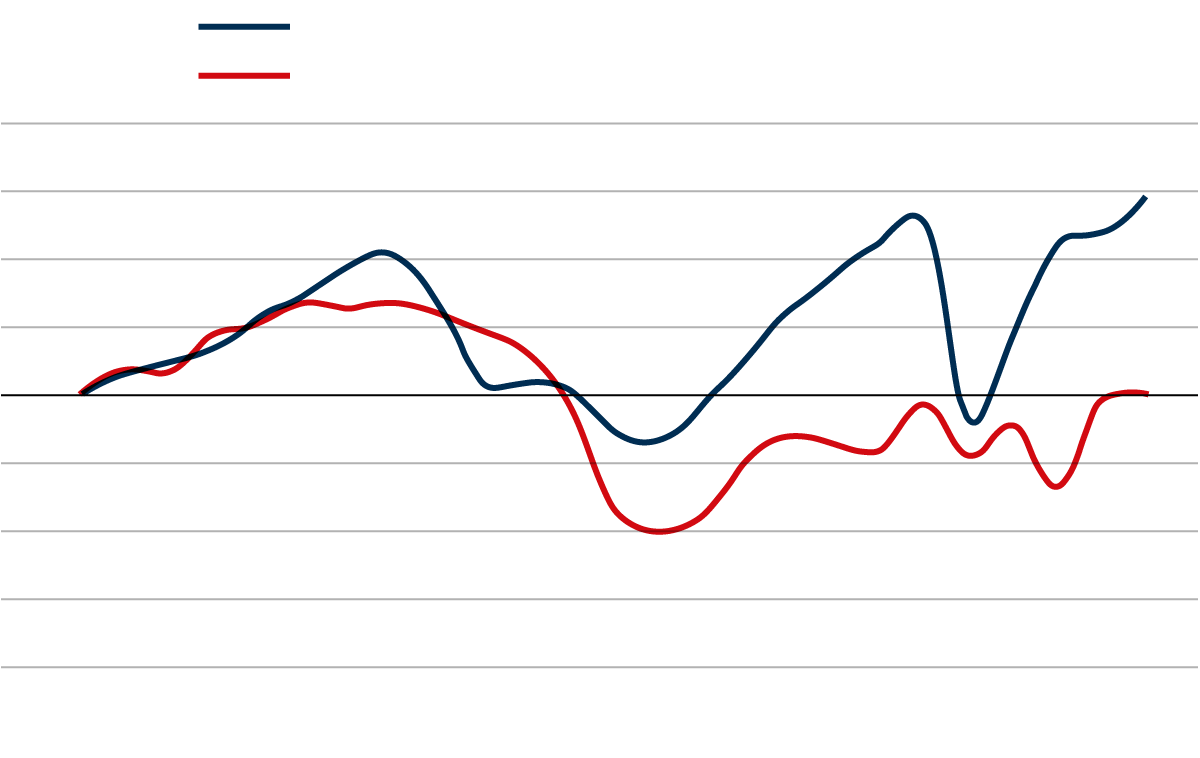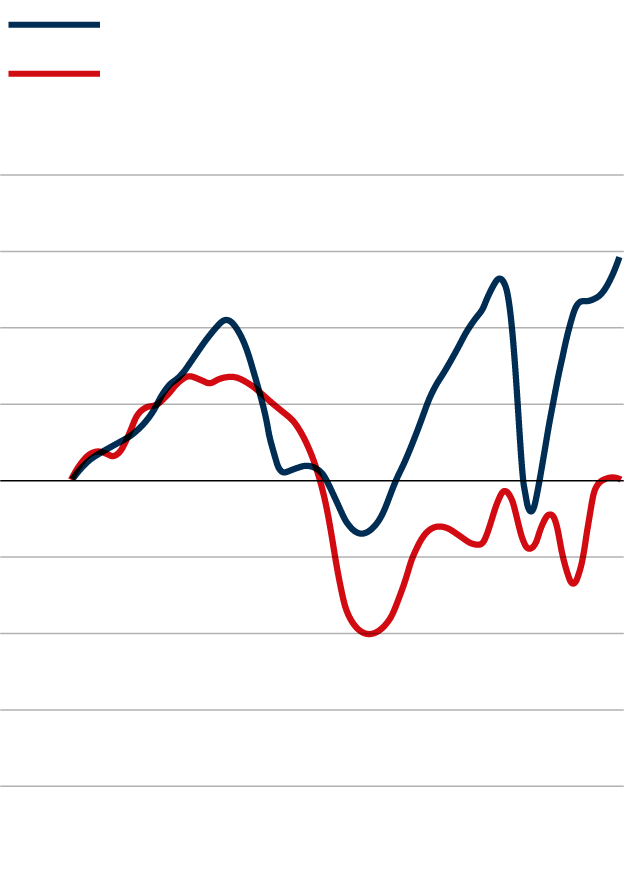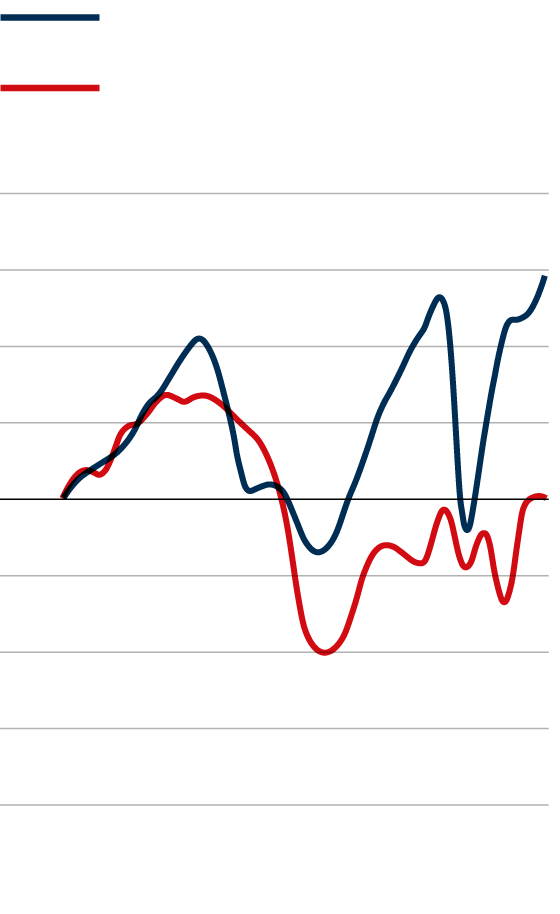Catalan family income has stagnated for 25 years.
Despite improved public services, rising housing prices have eroded citizens' well-being so far this century.


BarcelonaCatalan household income has been stagnant for a quarter of a century. From 2000 to 2024, the income available to citizens for consumption and investment grew by 0.1%, in contrast to the Catalan economy's 48.7% growth over the same period, according to a study by the Barcelona Chamber of Commerce. This stagnation would improve with an increase in the quantity and quality of public services received by families (healthcare, education, long-term care), but this improvement is completely eroded in practical terms by rising housing costs.
Thus, the gross disposable income of Catalan families remained almost flat between 2000 and last year: if adjusted for the cost of living, it went from 19,082 euros per year per inhabitant to 19,086, an increase of only four euros in 25 years, according to the Indicators of progress and well-being Prepared by the Chamber, a study that goes beyond the analysis of economic growth to focus on other elements that assess the prosperity of society. Joan Ramon Rovira, head of the Chamber's research department, was clear: "We are in the same place we were at the beginning of the century." This gross disposable income includes all income citizens receive (salaries, unemployment benefits, pensions, or dividends) minus the taxes they pay.
This figure does increase if we take into account the value of public services that citizens receive from the administration, such as healthcare, education, job training, and support for long-term care. Thus, including these services, between 2000 and 2024, per capita household income rose from €21,582 to €22,364 per year, an increase of 3.6%. In other words, the improvement in public services has led to an improvement in the economic well-being of families so far this century.
However, this improvement is completely eroded by the loss of purchasing power caused by the sharp rise in housing prices, both for homeowners and renters. Subtracting from these figures what families spend on housing, disposable income per capita remains flat: in 2000, each Catalan had €18,010 annually, while in 2023 the figure was only €18,031, an improvement of €21.
"The fraction of income spent on housing in Europe, although it has increased, has increased considerably less than in Catalonia," Rovira noted regarding the evolution of housing prices in recent years. Thus, while household disposable income in Catalonia is 85.4% of the average income in the five closest European Union countries (Germany, France, Italy, the Netherlands, and Belgium), when public services are added and housing expenditure is subtracted, it drops to 80.1% (26.0%).
This stagnation in citizens' well-being has political causes and consequences. "In the last quarter of a century, private consumption per person has not increased, and neither has income," notes Rovira, who adds that social protection for citizens has "significantly increased," especially because "it started from very low levels compared to Europe." According to the Speaker of the Chamber, Josep Santacreu, this stagnation in per capita income "can explain much of the disaffection" society feels toward public institutions.
Economic Expansion
These figures contrast with the strong expansion of the Catalan economy. Gross domestic product (GDP, the indicator that measures a region's economic activity) grew by 48.7% between 2000 and 2024, a striking figure when compared to the 0% increase in household income. "GDP has been doing very well in recent years," says Rovira, who emphasizes, however, that when looking at GDP per capita, the increase is lower, at 14.7% over the same period. This difference is due to several factors: one, aging, with a higher percentage of people not working; two, productivity (the amount produced by a worker), which has not grown much; and three, population growth.
The fact that household income has not grown but GDP per capita has has been due to the fact that GDP encompasses the entire economy, not just the money available to families. However, the fact that the economy is growing but family income is not means that other branches of economic activity are growing, whether it be the public sector, the business sector, the financial sector, or the foreign sector.
The Chamber's report points to signs of improvement in areas that also affect citizens' well-being. For example, strong job creation has reduced unemployment, which has driven down inequality, which is currently lower in Catalonia than in the five European countries mentioned above combined. Environmental quality has improved in 25 years, as demonstrated by the fact that emissions levels plummeted during the financial crisis due to the decline in industrial activity; since 2013, despite the economic recovery, they have not risen again.
The report also indicates that the quality of life has also increased thanks to an improvement in health, as demonstrated by the fact that Catalonia closed 2023 with a life expectancy of 84 years, above the 81-something average of the five major founding countries of the EU.




